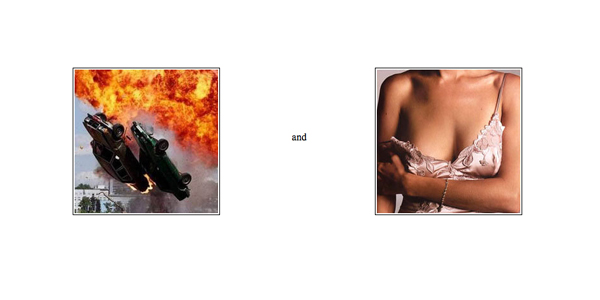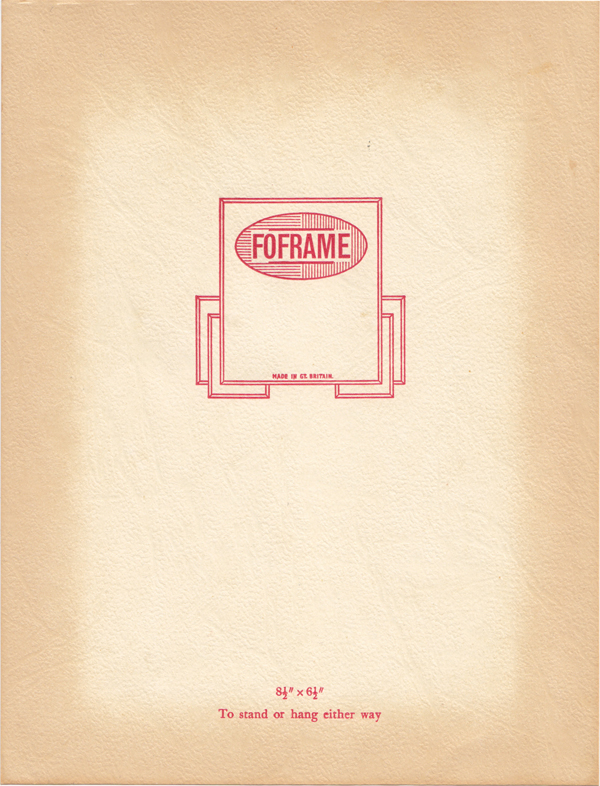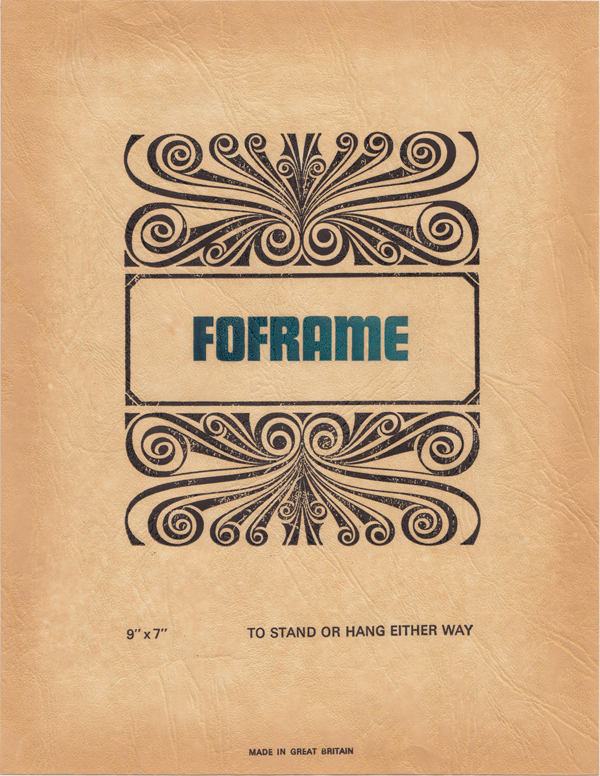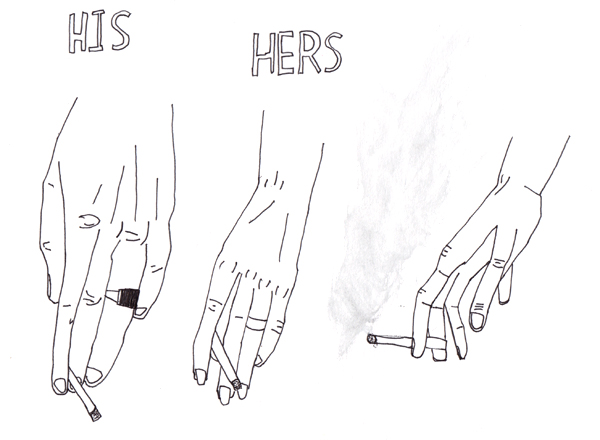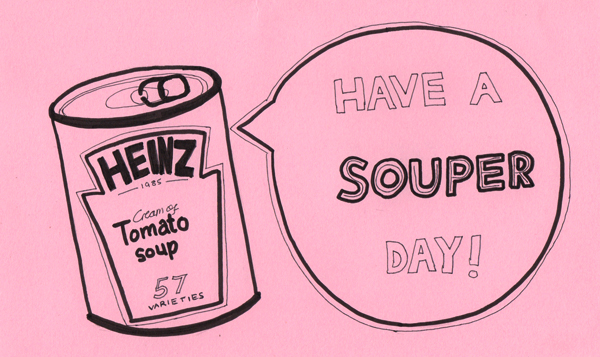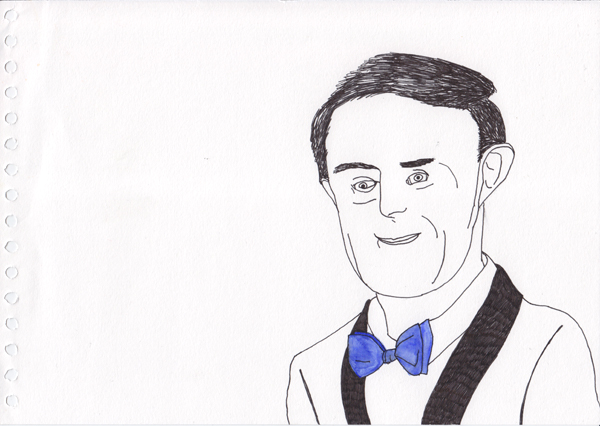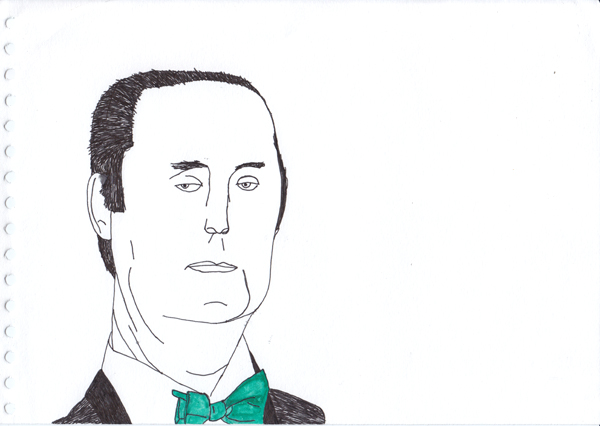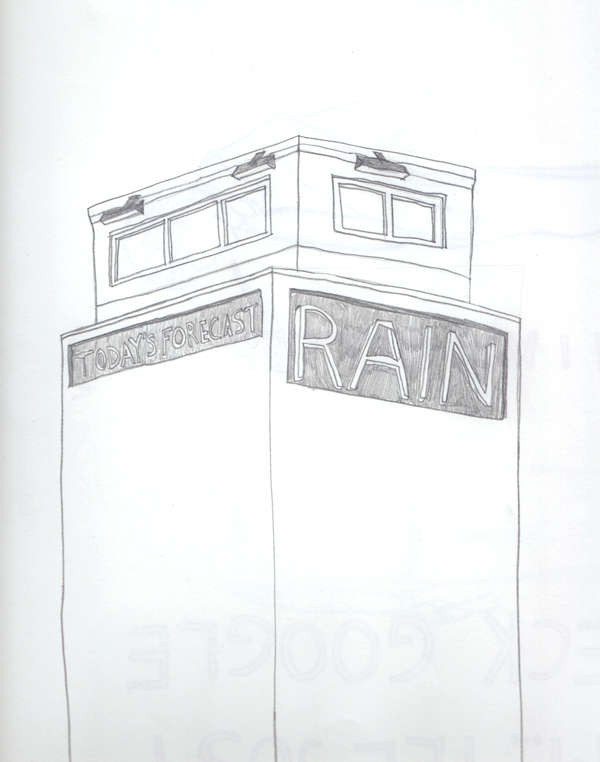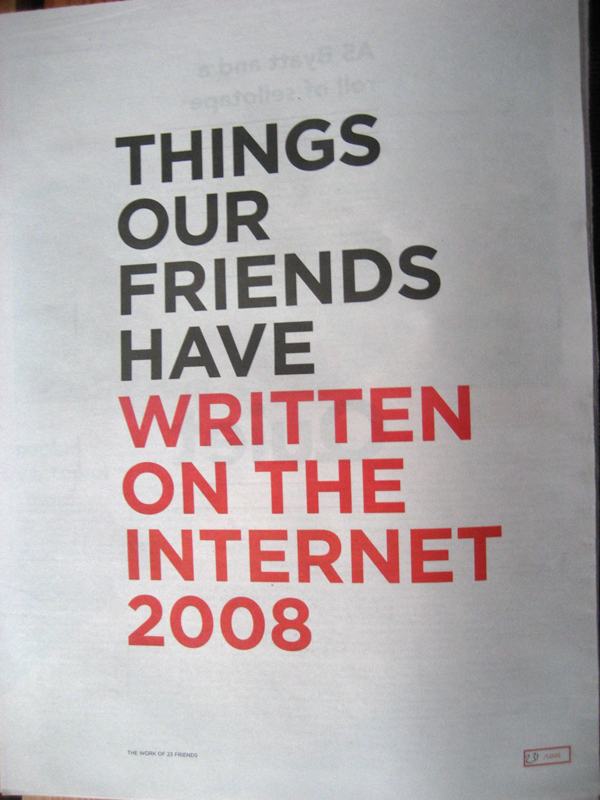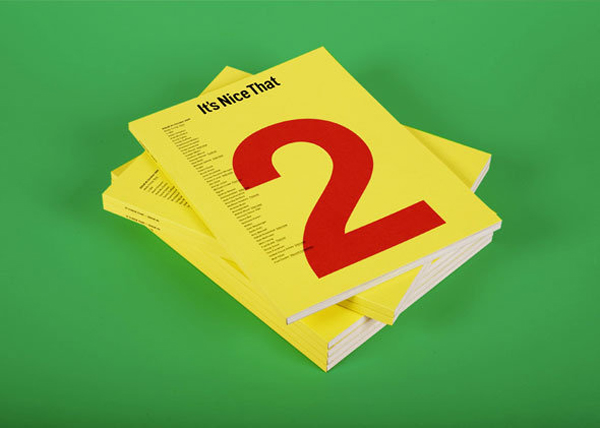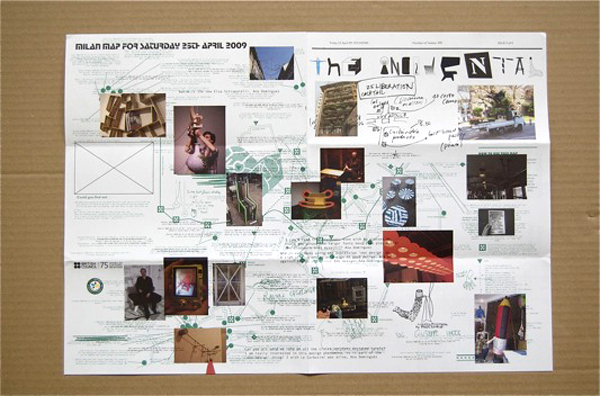Some Deptford frames
Nice Website
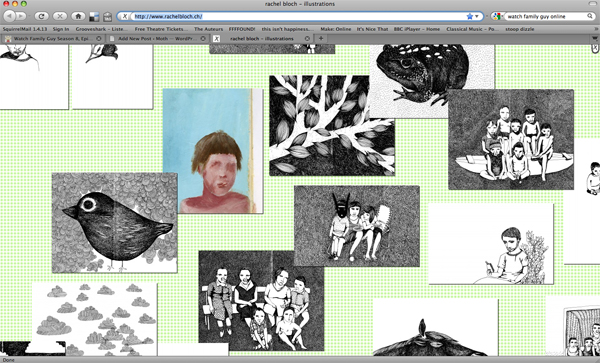 Lovely java (I think) based website from illustrator Rachel Bloch. It wouldn't suit for more project based designers as it's tricky to tell a clear story with this type of site but I think it's a great way for illustrators and probably photographers to show work. It lends the single items an objecty quality which I really like. I'm also a big fan of going to the extremities of the site and 'discovering' almost hidden items. Great Stuff. Link: here.
Lovely java (I think) based website from illustrator Rachel Bloch. It wouldn't suit for more project based designers as it's tricky to tell a clear story with this type of site but I think it's a great way for illustrators and probably photographers to show work. It lends the single items an objecty quality which I really like. I'm also a big fan of going to the extremities of the site and 'discovering' almost hidden items. Great Stuff. Link: here.
Some Recent Drawings
Design Awards 2010
Took a trip to the Design Museum and here's my round up of favourites from the Design Awards. The stuff shown is what I reckon is most awesome- there was of course some stuff that I didn't dig- but the following was so good I left feeling good about the Design industry which I hadn't expected. This is Sugru- a material which can be moulded by hand and cures at room temperature to become a washable, heatproof silicone. Sold as coloured lumps in various sizes it's designed for hacking your objects- fixing, making better and is generally just awesome.
The Really Interesting Group (RIG) have created the Newspaper Club- utilising down time at printers they have created a service which allows individuals to upload artwork for their own newspapers of between 5 and 5000 copies- they've made printing incredibly affordable. Perhaps the most interesting (excuse the pun) thing which started it off is 'Things Our Friends Have Written On The Internet', a publication aggregating images and text from blogs, and websites into a printed publication. Heavy web 3.0 shit.
In a similar vain It's Nice That get my respect for producing a consistently quality package of blog, features, jobs board, exhibitions, artwork and most importantly for me an extremely affordable printed output: again, using the advantages of the internet to create content. Printing it turns it into something better- sort of brings it full circle.
Real Time by Maarten Baas is a clock which is changed manually- he's done a few- some with brushes, some as installations but this one is done with some red glass- black paint (I think I read it was latex) and a squigee. Watch the video. Not in the show but found on his website: I really really like his clay furniture series- I mean I really like it and I'm not into chairs.
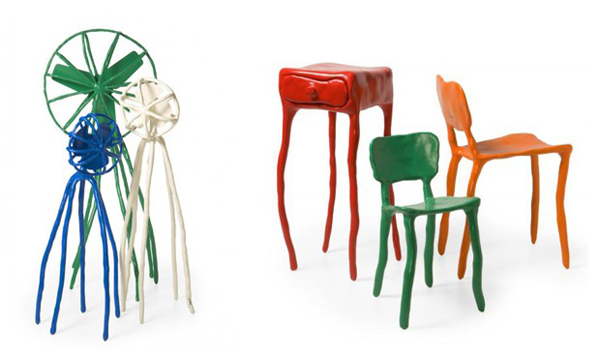 Also worth a mention were BBC iPlayer, Amazon's Kindle (Both of these were of going to happen, but are still well designed and pretty revolutionary), Why Not Associates Literary Forest, and The Trillion Dollar Project (to raise awareness for The Zimbabwean newspaper.
Also worth a mention were BBC iPlayer, Amazon's Kindle (Both of these were of going to happen, but are still well designed and pretty revolutionary), Why Not Associates Literary Forest, and The Trillion Dollar Project (to raise awareness for The Zimbabwean newspaper.
Some Vids from around the Interwebs
Sketch-a-Move from Superflux on Vimeo.
The Lonely Image
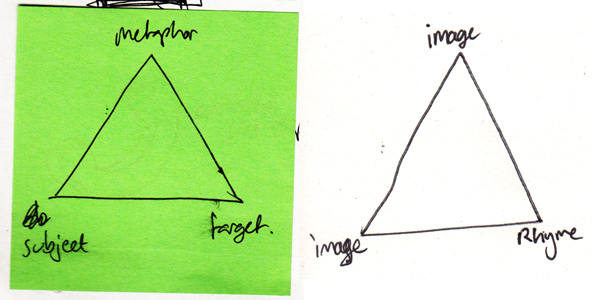 I'm interested in the relationships between objects. For the purposes of this piece of writing, 'objects' will be 2D images or titles/words.
I'm interested in the relationships between objects. For the purposes of this piece of writing, 'objects' will be 2D images or titles/words.
I am interested in the relationships which can be formed between two objects when they are presented side by side- as in a book spread. The spread creates a context for the objects to inhabit and invites the viewer to understand not only two separate images, but also the narrative which the objects create together, through merit of sharing the same space.
There are three ways in which adjacent objects may reference each other.
The first is to do with the physicality of the objects - colour, shape, form - strictly aesthetics. Two images may refer to each through merit of both being blue, or the focal point being a clock etc.
The second is concerned with the symbolical nature of an object and the ideas, attributes, and meanings which such objects reference. For example an image of a beach representing a memory of a holiday, a shell as a souvenir of the same experience, or a train ticket of the journey completed to get to the holiday. Other examples of ideological referencing could be religious symbols, celebrity icons, or brand logos.
The third referencing type is one of labelling and frames. Objects, even if attached arbitrarily, through their nature of sharing a page, refer to each other and have a dialogue. Through merit of being under the same title or being grouped together, these artefacts are forced to begin a discourse with each other. This is known as contiguity- from Aristotle’s ‘Laws of Association’- whereby things which are in close proximity are linked and ‘readily associated’.
Referencing is what allows objects to connect with each other and have a dialogue. Whether this dialogue is interesting or communicates the intentions of the curator depends on how well those objects rhyme together.
The skill of rhyming objects is similar to that of the story teller: to create either an ideological or physical (material or aesthetic) thread between a group of objects to create a fuller, deeper understanding of their context, history, and narrative. Juxtaposition of objects is very important and a pair may still rhyme even if the neighbouring objects are incomplete. Rhyme can give a spread a certain poetic and approximate logic.
I am particularly interested in the accidental ways in which objects may rhyme- when two things are abstracted from their original context and framed as a pair to extract something entirely unexpected and meaningful.
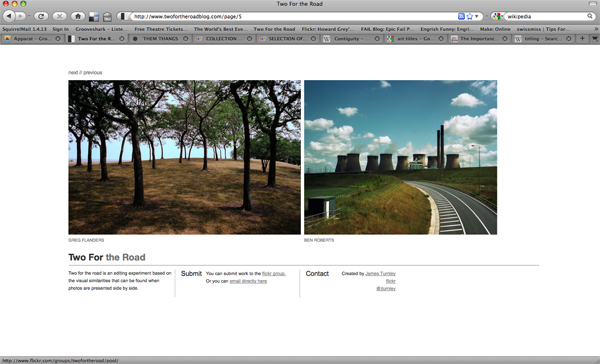
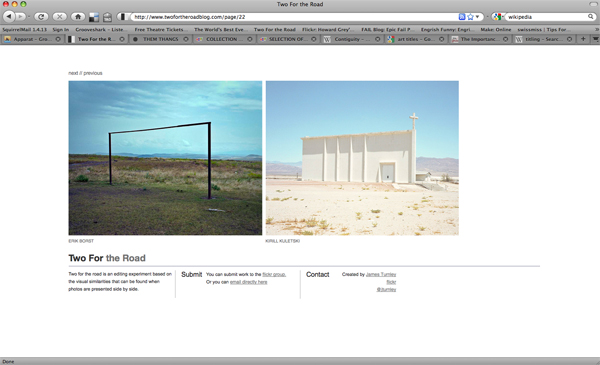 James Turnley created 'Two for the Road' as "an editing experiment based on the visual similarities that can be found when photos are presented side by side." Through merit of proximity the images share a contiguous dialogue. Through this, the image's messages are skewed and a new message emerges. In a similar way that the title of an artwork affects the context it is viewed in, so when objects are put together they cannot help but be changed by each other.
James Turnley created 'Two for the Road' as "an editing experiment based on the visual similarities that can be found when photos are presented side by side." Through merit of proximity the images share a contiguous dialogue. Through this, the image's messages are skewed and a new message emerges. In a similar way that the title of an artwork affects the context it is viewed in, so when objects are put together they cannot help but be changed by each other.
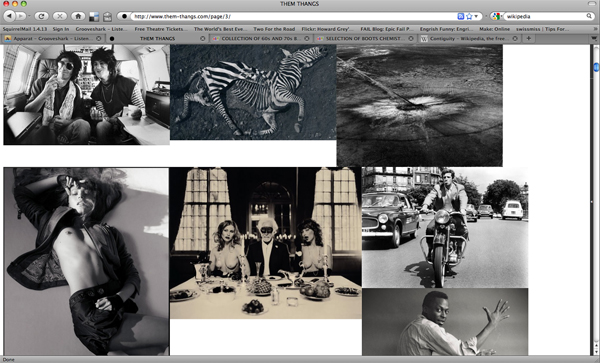
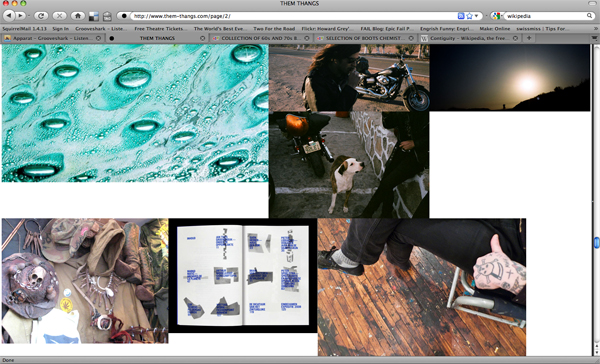 'Two for the Road' is a curated attempt to create rhyme. 'Them Thangs' is run by Justin Blyth: 'It is a collection of things I like, intended for visual inspiration'. It is perhaps best described as a visual blogzine. The display of the images is part curated and part organic. Images are selected but then allowed to flow through the page, creating many and different relationships. Images which ordinarily would seem unremarkable, when viewed as a collection (through benefit of being physically/aesthetically, ideologically or contiguously related) become a necessary part of a captivating and beautiful whole.
'Two for the Road' is a curated attempt to create rhyme. 'Them Thangs' is run by Justin Blyth: 'It is a collection of things I like, intended for visual inspiration'. It is perhaps best described as a visual blogzine. The display of the images is part curated and part organic. Images are selected but then allowed to flow through the page, creating many and different relationships. Images which ordinarily would seem unremarkable, when viewed as a collection (through benefit of being physically/aesthetically, ideologically or contiguously related) become a necessary part of a captivating and beautiful whole.
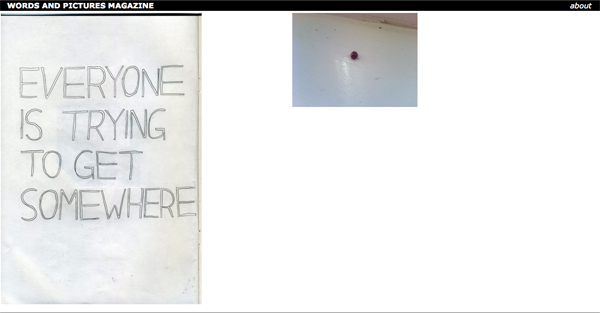
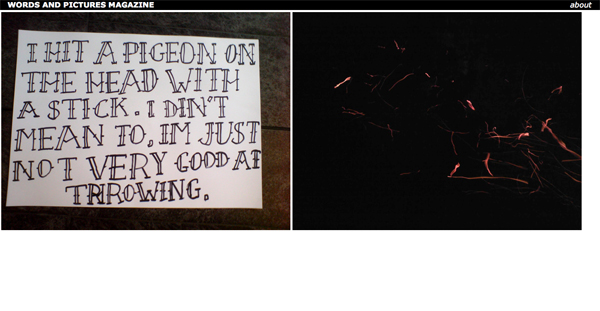
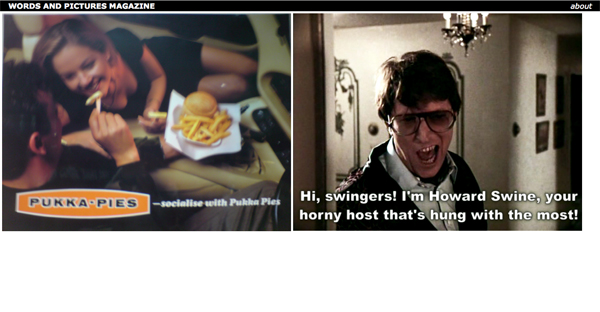 Words and Pictures is a website I am in the process of creating with Mike which attempts to cultivate the moment of rhyme by allowing uploaded content to appear next to each other randomly. This is to further explore the themes discussed here: particularly contiguity, and also to create content for an off line printed magazine of curated and edited pairs of objects.
Words and Pictures is a website I am in the process of creating with Mike which attempts to cultivate the moment of rhyme by allowing uploaded content to appear next to each other randomly. This is to further explore the themes discussed here: particularly contiguity, and also to create content for an off line printed magazine of curated and edited pairs of objects.
Vids
Facts About Projection from Studiocanoe on Vimeo.
